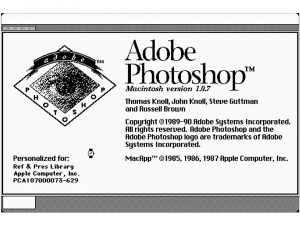
(Michigan Engineering)
Thirty years ago, the digital technology we rely on today wasn’t just unavailable; it was inconceivable. And yet at Michigan Engineering, a young PhD student named Thomas Knoll was quietly creating a piece of software that endures today as one of the world’s most popular applications. It would turn countless industries on their heads: marketing, advertising, publishing and of course, photography. It would completely change how we see the world. It would also create a brand-new verb: to Photoshop. The Photoshop story begins in 1988 when Knoll began trying to improve factory robots as part of his PhD work in computer vision. “There’s a bin of randomly arranged parts and a robot,” Knoll explains. “The robot has to be able to recognize and grab a part out of the bin, even if it’s partially obscured by other parts. That means that the robot has to be able to find the edge of an object.” So he wrote computer algorithms that would find the edges of objects within an image. These algorithms eventually became the core of Photoshop.
